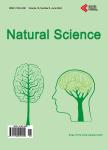Seismic pounding and collapse behavior of neighboring buildings with different natural periods
Seismic pounding and collapse behavior of neighboring buildings with different natural periods作者机构:Collaborative Research Center Ashikaga Institute of Technology Ashikaga-shi Japan Division of Engineering Mechanics and Energy University of Tsukuba Tsukuba-shi Japan Kyoryo Consultants Ltd. Tokyo Japan Science Programs Division Japan Broadcasting Corporation Tokyo Japan
出 版 物:《Natural Science》 (自然科学期刊(英文))
年 卷 期:2012年第4卷第8期
页 面:686-693页
学科分类:1002[医学-临床医学] 100214[医学-肿瘤学] 10[医学]
主 题:Seismic Pounding Collapse Behavior Neighboring Buildings Natural Period Asi-Gauss Technique
摘 要:Seismic pounding phenomena, particularly the collision of neighboring buildings under long-period ground motion, are becoming a significant issue in Japan. We focused on a specific apartment structure called the Nuevo Leon buildings in the Tlatelolco district of Mexico City, which consisted of three similar buildings built consecutively with narrow expansion joints between the buildings. Two out of the three buildings collapsed completely in the 1985 Mexican earthquake. Using a finite element code based on the adaptively shifted integration (ASI)-Gauss technique, a seismic pounding analysis is performed on a simulated model of the Nuevo Leon buildings to understand the impact and collapse behavior of structures built near each other. The numerical code used in the analysis provides a higher computational efficiency than the conventional code for this type of problem and enables us to address dynamic behavior with strong nonlinearities, including phenomena such as member fracture and elemental contact. Contact release and recontact algorithms are developed and implemented in the code to understand the complex behaviors of structural members during seismic pounding and the collapse sequence. According to the numerical results, the collision of the buildings may be a result of the difference of natural periods between the neighboring buildings. This difference was detected in similar buildings from the damages caused by previous earthquakes. By setting the natural period of the north building to be 25% longer than the other periods, the ground motion, which hada relatively long period of 2 s, first caused the collision between the north and the center buildings. This collision eventually led to the collapse of the centerbuilding, followed by the destruction of the north building.



